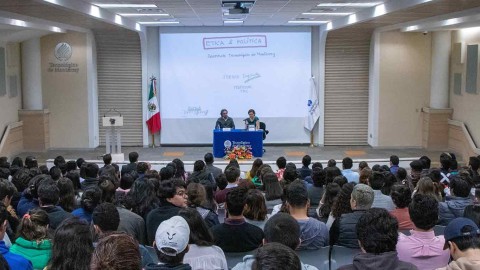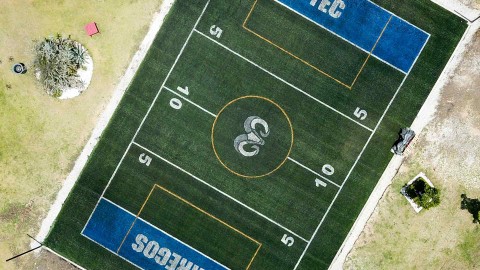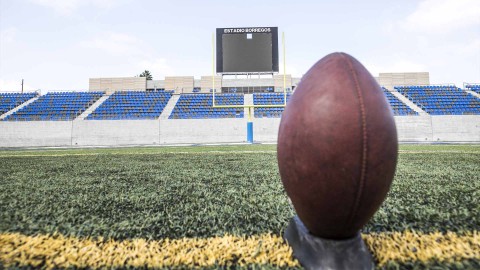Privacy Notice Financial Think Tank
"In the event of a discrepancy between the content of the English version and the original Spanish version the latter shall prevail".
Identity and address of the responsible entity
The entity responsible for the personal information that you provide is Instituto Tecnológico y de Estudios Superiores de Monterrey (hereinafter “ITESM”), address Av. Eugenio Garza Sada Sur No. 2501, Colonia Tecnológico, Monterrey, Nuevo León, Mexico, C.P. 64700.
If you have any questions related to the protection of your personal data, you can contact us at the following email: datospersonales@itesm.mx.
Personal data and sensitive personal data processed by ITESM
To fulfill the data processing purposes indicated herein, ITESM must collect and process the following categories of personal data:
- Identification data, including your personal image
- Contact data
- Employment data
Moreover, in order to fulfill the purposes indicated herein, ITESM will not collect or process any sensitive personal data.
Primary purposes
ITESM will process your personal information for the following primary and necessary purposes:
- To manage your subscription to receive Financial Think Tank publications.
- To contact you to invite you to participate in the events we organize.
- To address and follow up on any requests and complaints you may file.
- Keep for a limited time a historical record of the events in which you participate.
Secondary purposes
If you agree, ITESM will process your personal data for the following additional purposes:
- To generate statistics for ITESM’s internal control of the reports recorded.
The legitimation of the aforementioned secondary purpose is based on your consent, which means that at any time you can oppose the same or revoke your consent.
If you wish to restrict or suppress the processing of your personal data for any or all of the secondary purposes, please contact us immediately by email at the following address: datospersonales@itesm.mx.
Transfers
Based on the provisions of article 37 of the LFPDPPP (Federal Law on Protection of Personal Data Held by Private Parties), ITESM can transfer your personal data without the need for your consent in the following cases:
- Controlling, subsidiary or affiliate companies under the common control of the responsible entity, or a parent company or any company from the same group as the responsible entity which operates under the same processes and internal policies.
- The competent authorities for the cases set forth in the applicable legislation, in the event that we receive a requisition for mandatory compliance.
ARCO rights and/or revocation of consent
You or your legal representative can exercise any of your rights of access, rectification, cancellation or opposition (hereinafter “ARCO rights”), and revoke your consent for the processing of your personal data by sending an email and following the procedure, requirements, and deadlines for the exercise of your ARCO rights and/or revocation of consent on our webpage: https://tec.mx/es/derechos-arco-yo-revocacion-del-consentimiento.
Please note that we cannot address your request or terminate use immediately in every case, since a legal obligation could be in place that requires us to continue to process your data.
Options for limiting the use or disclosure of your Personal Data
You can limit the use or disclosure of your personal data by sending your request to: datospersonales@itesm.mx.
Requirements for proof of identity and the procedure for addressing your request will be governed by the same criteria indicated on our webpage: https://tec.mx/es/derechos-arco-yo-revocacion-del-consentimiento. If your request is valid, you will be added to ITESM’s exclusion list.
Use of Cookies
ITESM uses several technologies to enhance the efficiency of the Platform, including your browsing experience. Cookies are small pieces of information stored on the browser used by each user that enable the server to remember specific data that can be used later on. This information makes it possible to identify and save your personal preferences in order to offer you a better browsing experience.
The use of cookies and other technologies can be deactivated, disabled or adjusted by following the procedures of the internet browser you are using.
The personal data that can be obtained through the use of these technologies are: Identifiers, session username and passwords, region where you are located, type of browser, type of operating system, date and time of starting and finishing a session, webpages visited, searches completed, and advertising viewed. These technologies can be disabled by following the procedures of the internet browser you are using:
- Select the option “configuration” or tools, according to your browser.
- Select the option deactivate cookies.
This process disables all the cookies on your browser, but not those from our Platform.
Changes to this Privacy Notice
ITESM reserves the right, at its sole discretion, to change, modify, add or eliminate parts of this Privacy Notice at any time. As a result of legislative changes, internal policies or new requirements for the provision of offering of our services, this Privacy Notice is subject to modifications or updates. In this event, ITESM will publish such changes on the official website: https://tec.mx/es/aviso-de-privacidad-think-tank-financiero.
Last updated: 08/06/2020


























































